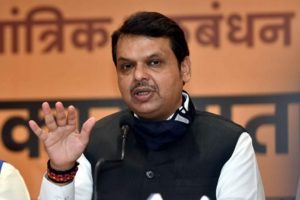Indians are ambitious and self-confident today. There’s a palpable air of hope and optimism all over the country. Thousands of Adanis and Ambanis are in the making. Driven by a diverse population, a rapidly growing economy, and an expanding geopolitical presence, India has the will power and visionary leadership to strengthen its position as a responsible, stable, and dynamic global leader. As India continues to emerge as a resilient, prosperous, and responsible leader, setting an example for inclusive growth and sustainable development worldwide, the question is how India would deal with China. Would the materialization of India’s Vision 2030 reset the geopolitical balance? Let’s see. In actualising its Vision 2030, prioritizing sectors such as manufacturing, digital services, renewable energy, and infrastructure development, India has fostered sustainable, inclusive, and resilent economic growth to becoeme the third largest global economy in the next few years.
Within a decade, by 2035, India would be a $10 trillion economy that would lift millions of people out of poverty and create a huge, prosperous, and dynamic middle class. The self-reliant India initiative (Atmanirbhar Bharat) focusing on making India a hub for manufacturing and innovation and promoting local industries is working in full force.

Through financial incentives, policy reforms, and skill development programmes, India is working to build an economy that contributes significantly to global supply chains. For this purpose, leveraging digital transformation to drive economic growth has been a core priority. Massive programmes like the National Infrastructure Pipeline (NIP) and Gati Shakti are expanding India’s roads, railways, ports, and urban facilities, to match global standards and support the growing economy. India’s scientific and technological advancements are essential for making her an innovative society, which necessitates investment in space exploration and artificial intelligence.
ISRO’s (Indian Space Research Organisation) successful missions, including the Chandrayaan and Mangalyaan programmes, showcase India’s pro w ess. India envisions increased international collaboration in space, both for scientific exploration and commercial ventures. India is fostering an AI ecosystem that focuses on healthcare, agriculture, education, and urban management. The National AI Strategy, for instance, aims to lev erage AI for economic development and job creation while upholding ethical and inclusive principles.
By increasing public and private investments in R&D, India is positioning itself as a leader in scientific innovation, developing home-grown solutions to address both national and global challenges. With its large population and vulnerability to climate change, India underscores the importance of environmental sustainability, which requires a plan for renewable energy transition. India has set an ambitious target of achieving 500 GW of renewable energy capacity by 2030. Solar power, wind energy, and green hydrogen are central to India’s energy strategy, helping it reduce dependency on fossil fuels and transition to a green economy. India’s role in international climate agreements, such as the Paris Agreement, aligns with its objectives to reduce carbon emissions and promote sustainable practices. India’s commitments emphasise developing climate-resilient infrastructure, protecting biodiversity, and supporting sustainable agricultural practices. Moreover, rapid urbanization requires sustainable planning to accommodate growing populations.
Waste management systems and water conservation initiatives are being promoted to build resilient urban infrastructure. Twelve new smart city projects under the National Industrial Corridor Development Programme (NICDP) are aimed at boosting India’s manufacturing ecosystem. Strengthening India’s human capital is vital for not only achieving its development but also for supplying intellectual capital to the rest of the world. Programs like Ayushman Bharat, the world’s largest government healthcare scheme, provide affordable healthcare access to millions. India is working on expanding healthcare infrastructure, developing skilled healthcare professionals, and fostering pharmaceutical and biotech innovation.
The National Education Policy (NEP) emphasizes critical thinking, digital literacy, and skill development. It aims to make India’s educational system more inclusive and industry-aligned, producing a workforce capable of leading India’s economic and technological advancement. With one of the world’s largest youth populations, India must develop policies that empower young people through skill development, entrepreneurship, and employment opportunities. India aims to become one of the world’s top knowledge powers. India is a global player, and is strengthening its global diplomatic presence by pursuing partnerships with nations across the Middle East, Asia, Africa, Europe, the United States, and Latin America to foster shared prosperity and stability. India’s participation in forums like G20, Brics, Shanghai Cooperation Organisation, and other global institutions allows it to shape global policies on economic, environmental, and security matters. India’s G20 presidency was pivotal in presenting its vision for an inclusive and resilient global economy. Indian policy promotes a free, open, and inclusive Indo-Pacific region, building alliances with countries such as Japan, Australia, and the United States through initiatives like Quad. As a leader of the Global South, India has strengthened ties with Africa, Latin America, and Southeast Asia, providing technical assistance, capacity building programmes, and development aid.
India is strengthening its national security and cybersecurity through modernizing its defense capabilities and establishing robust cybersecurity measures. India is investing in indigenizing defense technology, procuring advanced equipment, and enhancing military capabilities through partnerships with defense tech companies and other nations. India’s growing digital economy makes cybersecurity a national priority. By investing in cyberinfrastructure and fostering public-private partnerships, India aims to safeguard its critical digital assets and protect its citizens’ data. With one of the largest, richest, and most entrepreneurial diasporas, India has been leveraging its powerful NRI community as cultural ambassadors promoting Indian values, contributing to bilateral ties with host countries, and, most of all, helping funnel investment and technology transfer to India.
With aspirations to be a leading force in the world, balancing economic growth with environmental responsibility and diplomatic engagement with development goals, through strategic policies across economic, technological, and social dimensions, India is on the cusp of a future where it not only contributes but also shapes the global narrative. But how would India deal with China? Fortunately, In – dia’s Vision 2030 places a strong emphasis on stability, strategic autonomy, and regional cooperation, and these principles are central to how India approaches its relationship with China, particularly in the context of the long-standing Himalayan border conflict and unbalanced trade relations. India prioritizes regional stability, focusing on diplomatic engagement, and emphasizing de escalation and confidence-building measures to manage border tensions.
India’s diplomatic approach includes regular military and diplomatic dialogues with China, focusing on mutual agreements like the Line of Actual Control (LAC) guidelines and mechanisms to manage troop movements and prevent flarups. Nonetheless, in response to Chinese infrastructure expansion, India continues improving its border infrastructure, such as roads, military outposts, and logistics support, to ensure security and rapid response capabilities. The trade relationship between India and China is complex. China is one of India’s largest trading partners, and India relies on Chinese imports for various sectors, including electronics, pharmaceuticals, and manufacturing. However, Vision 2030 emphasizes self-reliance and reducing dependency on single sources, particularly for strategic and critical supplies. India’s Atmanirbhar Bharat initiative is central to reducing dependency on China by developing domestic manufacturing capabilities.
For instance, India is expanding its electronics manufacturing and pharmaceutical industries to gradually replace Chinese imports. Given China’s strong digital and cyber capabilities, India is placing a strong emphasis on cybersecurity, including developing resilient cyber defenses, especially in critical infrastructure sectors, to counter potential cyber-attacks. India is likely to adopt a selective decoupling strategy, targeting critical sectors like defense, technology, and telecommunications. Restrictions on Chinese investments in sensitive areas, such as telecommunications, show a cautious approach to balancing economic needs with security concerns.
India’s Indo-Pacific strategy and alliances like the Quad are designed to promote a balanced regional presence and ensure freedom of navigation. Although not explicitly aimed at China, these partnerships serve as a counterweight, offering India more leverage in regional diplomacy. India is deepening economic ties with countries like Japan, South Korea, the United States, and the EU to diversify trade partnerships and supply chains. India’s interest in agreements such as the Indo-Pacific Economic Framework and its active role in Asean dialogues underline this diversification strategy. India’s strategic focus on the Indian Ocean region acts as a counterbalance to Chinese influence.
It is in the backdrop of India’s defense, economic, and diplomatic preparedness, and geopolitical standing that the recent India-China border patrol agreement should be seen cautiously, perhaps, as a significant diplomatic breakthrough. Looking at China’s past erratic behavior, its long-term sustainability remains uncertain. The agreement signals a move towards de-escalation along the LAC, where both countries have stationed tens of thousands of troops. Reverting to pre-2020 pat rolling norms reduces the chances of accidental skirmishes and helps stabilize the situation at friction points like Depsang Plains and De mchok. The resumption of patrolling according to pre-2020 terms is a confidence-building measure, indicating a mutual willingness to return to a previously acceptable status quo. This could pave the way for further dialogue and potentially ease tensions that have persisted since the 2020 Galwan Valley clash. While the agreement is a positive step, it does not resolve border conflicts between India and China.
The 2,100-mile de facto border, the Line of Actual Control, remains poorly defined and a source of ongoing disputes. Numerous steps are still needed in the long process of resolving issues including troop de-induction, demobilization, and addressing the infrastructure that has been established. The long-term sustainability of the border patrol agreement will depend on continued diplomatic efforts, successful implementation on the ground, and the broader geopolitical context of India-China relations. India has been working to develop a balanced approach to the China relationship, combining diplomacy, self-reliance, strategic alliances, and defense readiness.
While prioritizing peaceful engagement, India must continue strengthening its military and economic independence, pursuing regional partnerships that offer security and economic alternatives to China. Through this multi pronged approach, India must stand strong and strengthen regional stability, while remaining resilient in the face of shifting geopolitical dynamics in Asia.
(The writer is the author of India In A New Key: Nehru To Modi)












